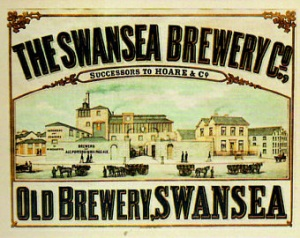13.20 at St. Teilo church, Bishopston
21st December 1941, Flight W3998, Short
Sunderland II, took off from Mount Batton RAF Seaplane Station, Plymouth Sound,
Devon.
During the Second World War, the airbase was home to a
squadron of Sunderland bombers, who used the sheltered waters for frequent forays
over the Atlantic on seek-and-destroy missions against the German U-boats.
The Short Sunderland planes were nicknamed ‘flying boats’,
the German Luftwaffe weren’t the only potentially danger. Taking off and landing could prove equally as
hazardous.
Flight W3998, took off in near darkness, the plane thundered
along the flare-lit runaway in near darkness, the pilot Flight Lieutenant David
Fletcher, of 201 squadron, struggled to get the plane, powered by four Bristol Pegasus engines,
into the air.
Fletcher, who was fearful of striking the semi-submerged
breakwater, taxied the plane for a second attempted to take off. This time, after clearing the breakwater, the
bombers engines stalled and dropped into the sea and burst into flames.
The crew, who were to fly over to Gibraltar for a Christmas break,
prior to a new posting to train Sunderland flight crews, they had enjoyed two
days break at Mount Batton. The plane
had been loaded with additional equipment and a crew of 15 men – 8 men more
than normal.
11 men, including the pilot, Flight Lieutenant David
Fletcher and Corporal John Humphrey Martin.
4 men survived the crash.
John Humphrey Martin, 22-year-old, was the son of Frederick
William and Hilda Martin, of Murton, Bishopston, he was buried at St. Teilo
Church, Bishopston.
St. Teilo church the tower, which has been described as
simple in construction, is either English or Norman, having been dated either 12th
or 13th century. The tower had been designed as a safe refuge from
attacks by marauders from the sea. The
roof was thatch until 1831, after that date, it was tiled. 1886 the clock was purchased
from the Old Brewery, Singleton Street, Swansea.








Comments
Post a Comment